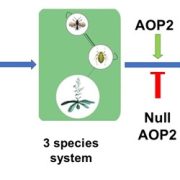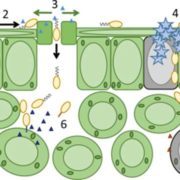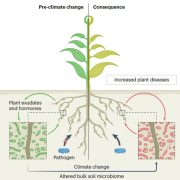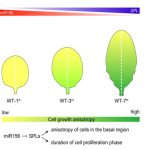Roots of misinformation on common mycorrhizal networks in forests
 As an educator, I reply on metaphors and stories to engage my readers, yet the line between hyperbole and engagement is thin. The concept of plant-plant communication is exciting, and certainly has some truth, but unfortunately has spilled over into a narrative that perhaps is more fiction than fact. In particular, the notion that the soil mycorrhizal networks serve as conduits for communication and nutrient exchange has taken hold in the popular imagination. Here, Karst et al. systematically review evidence for this phenomenon, and find little evidence for it. They report that there is a citation bias towards reporting only the supporting data and omitting the caveats. Although informing the public of the value of forests and particularly old-growth forests is important, we as scientists must communicate with facts not fantasy. Furthermore, I’m not sure that the study of plants benefits when people try to ascribe them with human traits. As @NobodyNursery Tweeted, “I am in awe of the beauty of the cut-throat competition between plants on the forest floor, and I don’t need to anthropomorphize nature to respect and protect the ecology involved. We can love the forest even if the trees aren’t talking to each other.” Hear, hear! (Summary by Mary Williams @PlantTeaching). Nature Ecol. Evol. 10.1038/s41559-023-01986-1
As an educator, I reply on metaphors and stories to engage my readers, yet the line between hyperbole and engagement is thin. The concept of plant-plant communication is exciting, and certainly has some truth, but unfortunately has spilled over into a narrative that perhaps is more fiction than fact. In particular, the notion that the soil mycorrhizal networks serve as conduits for communication and nutrient exchange has taken hold in the popular imagination. Here, Karst et al. systematically review evidence for this phenomenon, and find little evidence for it. They report that there is a citation bias towards reporting only the supporting data and omitting the caveats. Although informing the public of the value of forests and particularly old-growth forests is important, we as scientists must communicate with facts not fantasy. Furthermore, I’m not sure that the study of plants benefits when people try to ascribe them with human traits. As @NobodyNursery Tweeted, “I am in awe of the beauty of the cut-throat competition between plants on the forest floor, and I don’t need to anthropomorphize nature to respect and protect the ecology involved. We can love the forest even if the trees aren’t talking to each other.” Hear, hear! (Summary by Mary Williams @PlantTeaching). Nature Ecol. Evol. 10.1038/s41559-023-01986-1









